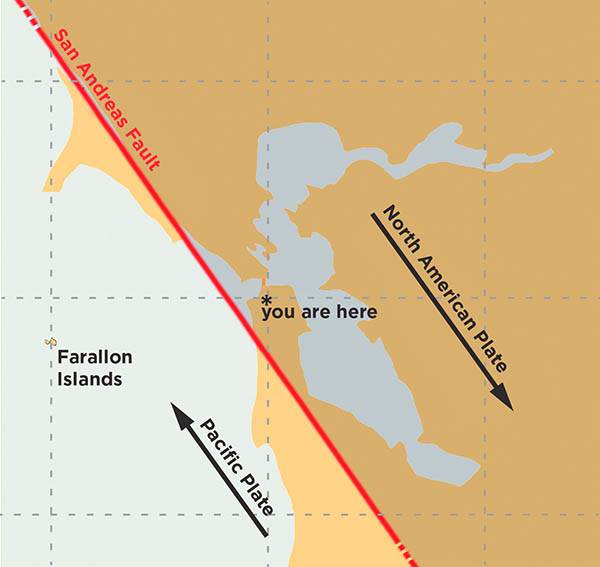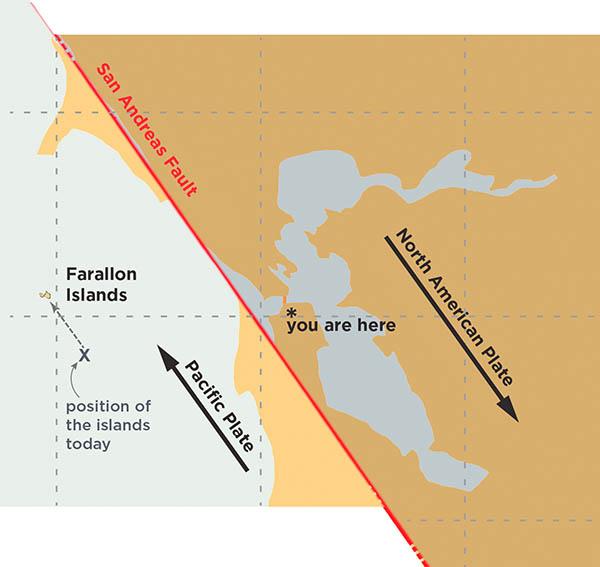Earth’s crust is broken up into about a dozen large sections called plates. These plates make up the continents and seafloor. They move slowly but steadily over millions of years.

The Present
At this location, you are standing on the North American Plate. The San Andreas Fault is about 6 miles (11 kilometers) away to the west, under the ocean. The other (far) side of the San Andreas Fault is the Pacific Plate. On a clear day when you look west over the ocean, you can see the Farallon Islands 30 miles (48 kilometers) away. As strain in the plates builds up and is released, causing earthquakes, the crust on the far side of the San Andreas Fault from where you are standing moves to the right. The Farallon Islands are thus slowly moving northward toward Alaska at the rate of about one mile (1.6 km) in 40,000 years.

300,000 Years From Now
If this geologic movement is "played backwards," going back about 15 million years, the Farallon Islands would be located in Southern California. Granite is not native to the San Francisco Bay Region, but the Farallon Islands are made of granite -- granite made about 400 miles (650 kilometers) away in Southern California and transported here by tectonic movement over that time span.
Exhibit designed by Robert Reitherman (CUREE)